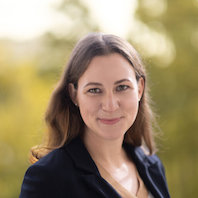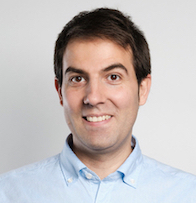Guest speakersDr. Verena Pichler (University of Vienna, Austria)
Dr. Verena Pichler studied Chemistry and obtained a PhD in Chemistry at the University of Vienna in 2013. She was appointed as external lecturer in 2017 and is now Section Head for Medical Radiochemisty and Biomarker Development at the Medical University of Vienna. Her research aims to address clinical needs in the diagnosis and treatment of neurological pathologies. She develops small molecule PET tracers targeting G-protein coupled receptors located in the peripheral and central nervous system, that can be used as tools for image-guided therapy. Another area of interest of her group is the development of complex dynamic 3D-cell culture methods, which mimics the tissue situation and has the potential to accelerate the screening of the new pharmaceuticals. Advances in Radiopharmaceuticals: Impact on Molecular Imaging and Image-Guided Therapy The field of nuclear medicine is experiencing significant achievements in molecular imaging, particularly in the domains of Positron Emission Tomography (PET) and Single Photon Emission Computed Tomography (SPECT), as well as targeted radionuclide therapy. The emergence of groundbreaking treatments like Lutathera® and Pluvico® has ignited a growing interest in exploring recent advancements within this field. These advancements primarily revolve around the utilization of small molecules, peptides, and antibodies as carriers in molecular imaging. This opportunity serves as a compelling incentive to delve into the latest developments within nuclear medicine. The exploration of novel targets and the expansion of the range of applied radionuclides is driven not only by biomedical considerations but also by economic and socio-ecological factors. It is essential to assess the impact of these innovations on the design and development of modern radiopharmaceuticals. Moreover, it is pertinent to examine how these developments are influencing the landscape of personalized medicine, particularly in the context of molecular imaging and image-guided therapy. As nuclear medicine continues to advance, understanding these correlations is paramount for harnessing the full potential of molecular imaging and image-guided therapy in the realm of healthcare. Pr. Andre Martins (University Hospital Tübingen, Germany)
André Martins, Ph.D. is one of the 2020 recipients of the prestigious Alexander von Humboldt Foundation's Sofja Kovalevskaja Award. In 2022 he was appointed as a W3 Full professor at the faculty of medicine in Advanced Preclinical Metabolic Imaging and Cell Engineering (AMICI). The AMICI uses highly translational molecular and metabolic imaging approaches to determine the role of metabolism in the tumor microenvironment. The AMICI is also working to develop the next generation of non-invasive metabolic sensors and gene reporters for molecular imaging. Our research is placed at the intersection of several scientific fields in oncology, biomedical imaging, and basic sciences in biophysics, biochemistry, and chemistry. Harnessing metabolic imaging to monitor cancer aggressiveness non-invasively in vivo This seminar will describe multimodal approaches for imaging tissue physiology in the context of molecular imaging. It will show our most recent advances detecting and discriminating metabolites in vivo, using innovative paramagnetic Shift Reagents for CEST-MRI, hyperpolarized 13C-pyruvate MR spectroscopy, and radiolabelled PET tracers.[1–5] This talk will comprehensively show how a solid base of several fundamental sciences in physics, chemistry, biology, and medicine can be used to detect metabolism with preclinical and clinical imaging. References |




